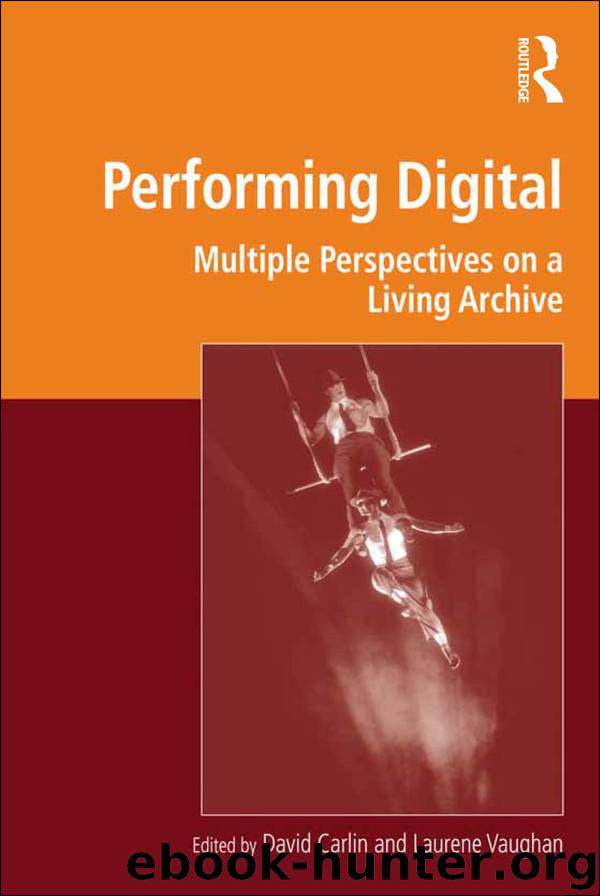Performing Digital by Carlin David; Vaughan Laurene; & Laurene Vaughan

Author:Carlin, David; Vaughan, Laurene; & Laurene Vaughan
Language: eng
Format: epub
Publisher: Routledge
Published: 2015-02-28T16:00:00+00:00
Figure 8.4 ‘Act explorer’ interface representations
A New Livingness
As cultural institutions make their collections more readily available in a digital form, there is a growing acceptance that simply putting data online is not enough; there needs to be ways that people can engage and be creative with the digital material.33
Working with software as a design material reveals the arbitrary nature of data representation. There is no inherent reason that objects should be in chronological order, that words should be certain places on a screen, that images or videos should be a certain size or position. Aesthetic and functional choices are made by designers based on deeply embedded communication design codes and traditions, assumptions about media literacy and historical echoes of decisions in the development of technology. As tacit design codes are liable to change over time, a ‘living archive’ must be one that allows for new modes of representation.
When software is regarded as material, rather than simply a substrate on which ‘other’ design work is performed, we can recognise software as a ‘mediating artefact’, in that it actively shapes the subjectivity and objectivity of the ways in which the archive can present itself to us. A design practice that recognises software as providing ‘back-talk’ from material encourages new ways of representing the archive – ways that could serve as critiques of how archives are traditionally presented and used within our current cultural context.
Here we arrive at what may be a new definition of ‘livingness’, connecting the initial concept of a ‘living archive’ – an archive that can be added to and shared – with the fact that archives are software. For the archive to be ‘living’ through design, the archive must provide a framework within which design experimentation (via acts of representation and recontextualisation) are both possible and encouraged. The digital archive must be more than a storage, retrieval and search mechanism for archival records; it must be a platform that enables these records to be represented and re-presented. An archive that can be added to, not just in terms of ‘content’, but also in terms of possible representations and interactions – archives as platforms for design representations.
Download
This site does not store any files on its server. We only index and link to content provided by other sites. Please contact the content providers to delete copyright contents if any and email us, we'll remove relevant links or contents immediately.
Kathy Andrews Collection by Kathy Andrews(11328)
Thirteen Reasons Why by Jay Asher(8458)
The Red Files by Lee Winter(3282)
How to Do Nothing by Jenny Odell(3103)
The Genius of Japanese Carpentry by Azby Brown(3041)
Stacked Decks by The Rotenberg Collection(2690)
Tattoo Art by Doralba Picerno(2492)
Champions of Illusion by Susana Martinez-Conde & Stephen Macknik(2327)
The Artist's Way Workbook by Cameron Julia(2116)
The Art of Doom by Bethesda(2041)
Calligraphy For Dummies by Jim Bennett(1925)
Creative Character Design by Bryan Tillman(1845)
Botanical Line Drawing by Peggy Dean(1771)
Wall and Piece by Banksy(1721)
One Drawing A Day by Veronica Lawlor(1720)
The Art of Creative Watercolor by Danielle Donaldson(1712)
Art Of Atari by Tim Lapetino(1571)
Pillars of Eternity Guidebook by Obsidian Entertainment(1543)
Happy Hand Lettering by Jen Wagner(1521)
